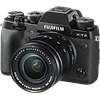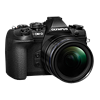Main
Model
Price
Advantages
launch
Announced
Body type
Camera subcategory
Sensor
Effective pixels
Max resolution
Sensor size
Sensor type
Processor
Image ratio w:h
Other resolutions
Sensor photo detectors
Image
ISO
Boosted ISO (minimum)
Boosted ISO (maximum)
White balance presets
Custom white balance
Image stabilization
Uncompressed format
JPEG quality levels
Image stabilization notes
Photography features
Minimum shutter speed
Maximum shutter speed
Maximum shutter speed (electronic)
Aperture priority
Shutter priority
Manual exposure mode
Subject / scene modes
Built-in flash
External flash
Flash modes
Continuous drive
Self-timer
Metering modes
Exposure compensation
AE Bracketing
WB Bracketing
Flash range
Screen / viewfinder
Articulated LCD
Screen size
Screen dots
Touch screen
Live view
Viewfinder type
Viewfinder coverage
Viewfinder magnification
Viewfinder resolution
Screen type
Videography features
Resolutions
File Format
Microphone
Speaker
Optics & Focus
Autofocus
Manual focus
Number of focus points
Lens mount
Focal length multiplier
Physical
Weight (inc. batteries)
Dimensions
Environmentally sealed
Battery
Battery details
Battery Life (CIPA)
Storage
Storage types
Connectivity
USB
HDMI
Microphone port
Headphone port
Wireless
Wireless notes
Remote control
Other features
Orientation sensor
Timelapse recording
GPS
Samples
Videos
Summary
The Fujifilm X-T2 highest resolution of 6000 x 4000 pixels (24 megapixels) is better than the OM-D E-M1 Mark II highest resolution of 5184 x 3888 pixels (20 megapixels). The Fujifilm X-T2 has larger sensor than the OM-D E-M1 Mark II: APS-C (23.6 x 15.6 mm) versus Four Thirds (17.4 x 13 mm). It is very important specification of this model because large sensor lets the photographer to take pictures of the higher quality. The Fujifilm X-T2 has a wider ISO range of 200-12800 than 200-25600 ISO range of the OM-D E-M1 Mark II. Such ISO numbers let the photographer to take better pictures in low light situations. The Fujifilm X-T2 offers more number of focus points than the OM-D E-M1 Mark II: 325 vs 121. More focus points means more convenience when attempting to focus on objects which are not centred.
The Olympus OM-D E-M1 Mark II is equipped with swiveling LCD which will let the photographer to make high quality selfies. The Fujifilm X-T2 screen is better as it has more number of screen dots 1,040,000 in comparison to 1,037,000 dots of the OM-D E-M1 Mark II screen. The higher dot count screen is better for reviewing pictures on your camera. The Olympus OM-D E-M1 Mark II has a touch screen. The OM-D E-M1 Mark II has better slowest (60 seconds) and maximum (1/8000 second) shutter speeds.
The X-T2 weighs 507g that is 67g lighter than the weight of the Olympus OM-D E-M1 Mark II.
The Fujifilm X-T2 has 7 advantages and the OM-D E-M1 Mark II only 6 so the X-T2 will be the best choice. Check the lowest price on Amazon.


